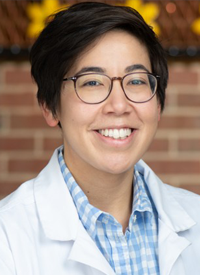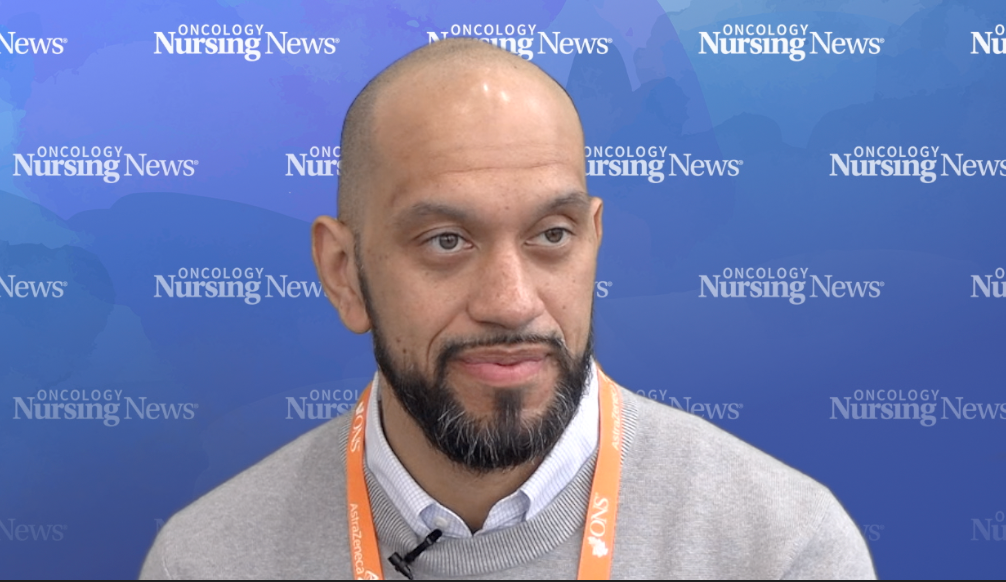How To Use Inclusive Language When Caring for Transgender Persons With Cancer
Stephanie Russell, DNP, AGNP-C, highlights the importance of gender-neutral language in the oncology environment.
Stephanie Russell, DNP, AGNP-C

In a presentation during the Oncology Nursing Society Bridge, Stephanie Russell, DNP, AGNP-C, a nurse practitioner at Johns Hopkins, explained that oncology nurses play a key role in creating an inclusive healthcare environment for transgender persons with cancer.
“Gender identity is a deeply complex and personal matter,” she said. “As healthcare professionals, it is our responsibility to enact personal and systemic change to create a less biased healthcare environment for our patients.”
What Does It Mean To Be Transgender?
As Russell explained, a cisgender is an individual who identifies with the sex assigned to them at birth. So, a cisman is someone who was assigned male at birth and identifies as a male. A ciswoman is someone who was assigned female at birth and identifies as female.
Transgender people are those who do not identify with the sex assigned them at birth. So, a transgender man is someone who was assigned female at birth but identifies as a male. A transgender woman is someone who was assigned male at birth but identifies as female.
We live in a heteronormative culture, meaning that our society believes that there are differences between males and females, and their respective gender roles. This is embedded in healthcare as well, Russell explained. Because of this, people who live outside of these normative principles often find themselves marginalized.
There are also individuals who exist beyond the binary. A non-binary person is someone who does not identify as exclusively male or female. Genderqueer people are those who reject the binary altogether, seeing gender as a dynamic spectrum.
“Gender non-conforming people have always existed,” Russell said. “In a legal sense, we are starting to recognize people who do not identify as male or female.”
Caring for The Transgender Patient
A good practice is to never assume answers about the patient. Oncology nurses should not assume they know what someone’s gender identity or sexual orientation is based on how they look or sound. Nurses should never assume they know how a person wants to describe themselves or their partners, nor should they assume that all of their patients are heterosexual and cisgender.
Further, Russell urges nurses to use gender-neutral terms that avoid using pronouns—especially when they are unsure of an individual’s pronouns. For instance, instead of “How may I help you, sir?” you may simply say: “How may I help you?”
Instead of “She is here for here for her appointment,” try: “The patient is here in the waiting room.”
Instead of “Do you have a wife,” say, “Are you in a relationship?” or “Do you have a partner?” Similarly, rather than ask, “What are the genders and bodies of your sexual partners?” It may be more effective to ask, “When you are having sex, is there any exposure to sperm or chance or pregnancy?”
When introducing themselves to a new patient, it is good practice for the nurse to say their own name and preferred pronouns before asking the patient theirs. For example, “My name is Stephanie, I am your nurse practitioner, and my pronouns are she/hers.”
Nurses should ask their patient what name they use and confirm that with the name of the patient intake form. If this name differs from the insurance or medical records, try phrases like “What is the name on the insurance,” or “Could your chart or insurance be under a different name?”
If a patient informs the nurse that they used the wrong name or pronouns, tell them, “I am sorry, I didn’t mean to be disrespectful.” Moving forward, be sure to use the correct name and pronouns.
“You don’t want to glide over mistakes as though they did not happen, but do not dwell on it,” Russell said.
When conducting a physical exam, Russell supports a trauma-informed and patient-centered approach. Patients should be allowed to keep their clothes on for as long as possible and have the ability to stop or decline certain parts of an exam. If possible, giving patients the option to self-collect specimens can also be beneficial.
It is important to note that being curious is not a reason to do a physical exam; if a physical exam would not be required for a cisgender person, then it is not necessary to do one for a transgender or non-binary person.
Lastly, patients who are transgender may have unique healthcare needs. If a nurse is confused or have a question about their gender-affirming care, they should reach out to the provider providing that care. Oncology nurses should not make their patients provide them with extensive education about trans-health care.
Why It Matters
As Russell explained in the presentation, being gender non-conforming can have an impact on health.
There are 1.4 million gender-non–confirming individuals who reside in the United States. Unfortunately, a 2015 report showed that 33% of transgender individuals have experienced verbal harassment, refusal of treatment, or insufficient clinical knowledge from their provider. Further, 23% of transgender patients shared that they avoided the doctor because they feared being mistreated.
Although systemic changes at both a legislative and institutional levels are needed to enact real care improvements, Russell said the individual nurse can inspire change by being sensitive, respectful, and welcoming of all patients.
“The impact of your personal interaction with the patient has more impact than you can expect, especially for a patient who may already feel like they don’t belong or that they’re in an environment they don’t feel comfortable in,” she said. “Welcome all patients— no matter their circumstances.”
Reference
Russell S. Transgender persons with cancer: what can we do better? Presented at: Oncology Nursing Society Bridge. September 13-15, 2022; virtual.




